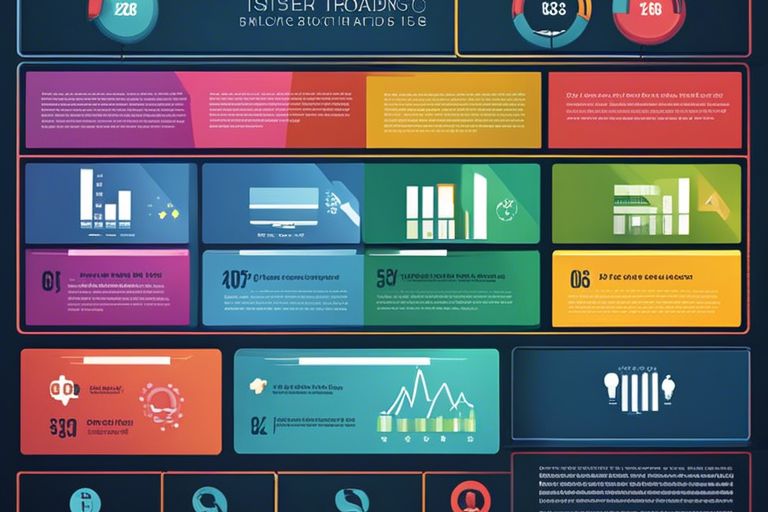Proven techniques have shown that developing master trading ideas is a skill that can be honed with practice and dedication. Just as Napoleon Hill emphasized the power of thought and planning, crafting successful trading strategies requires a strategic mindset and focused effort. By incorporating key principles such as thorough research, trend analysis, and risk management into your trading approach, you can elevate your trading game and achieve greater success in the financial markets. Here are some proven tips to help you develop master trading ideas that can lead to profitable outcomes.
Key Takeaways:
- Identify market inefficiencies: Look for areas where the market might be inaccurate or slow to react, and use this as an opportunity to develop unique trading ideas.
- Utilize multiple sources of information: Gather data from various sources such as financial news, technical analysis, and market research to form a well-rounded view and generate quality trading ideas.
- Test and refine your ideas: Before implementing your trading strategy, backtest your ideas using historical data and paper trading to refine and optimize them for better results.
Laying the Foundation
The first step in developing master trading ideas is to lay a solid foundation for your trading journey. This involves identifying your trading goals and developing a trader’s mindset.
Identifying Your Trading Goals
Trading without clear goals is like setting sail on a ship without a destination. Take the time to define your trading goals, whether they are financial, personal, or skill-based. Having clear objectives will guide your decisions and keep you focused on what you want to achieve in the market.
Developing a Trader’s Mindset
For you to succeed in trading, it is vital to cultivate a trader’s mindset. This mindset involves discipline, patience, and the ability to control your emotions in the face of market fluctuations. By developing a trader’s mindset, you will be better equipped to make rational decisions and stick to your trading plan, even when faced with challenges.
It is crucial to understand that developing a trader’s mindset is an ongoing process. It requires continuous self-reflection, learning from both successes and failures, and staying mentally resilient in the ever-changing world of trading.
Research and Analysis
Gathering Relevant Data
Now, with any trading idea, the first step is to gather relevant data. You need to research and collect information on the asset you are interested in trading. This includes historical price data, trading volumes, market news, and any other factors that may impact the asset’s price movements.
Analyzing Market Trends
One key aspect of developing master trading ideas is analyzing market trends. By studying charts and graphs, you can identify patterns and trends that may help you predict future price movements. Pay close attention to support and resistance levels, as well as any market indicators that may signal a shift in the trend.
Market trends can provide valuable insights into potential trading opportunities. By understanding the direction in which the market is moving, you can make more informed trading decisions and capitalize on profitable trades.
Identifying Patterns and Correlations
To develop master trading ideas, you must also focus on identifying patterns and correlations in the market. Look for recurring patterns in price movements or correlations between different assets or market indicators. These patterns can help you predict future price movements and improve the accuracy of your trading strategies.
Plus, keeping a watchful eye on correlations between various assets or market factors can give you a more comprehensive understanding of the market dynamics. By identifying these relationships, you can anticipate changes in market conditions and adjust your trading strategies accordingly.
Idea Generation
Once again, to become a successful trader, you must continuously work on improving your trading skills. To enhance your abilities, check out these 8 Easy Ways To Develop & Improve Your Trading Skills. These tips will help you cultivate a sharp trading mindset and refine your decision-making process.
Brainstorming Techniques
Idea generation is a crucial step in developing master trading ideas. One effective way to brainstorm trading ideas is by using mind mapping. Start with a central concept or market trend and branch out with related subtopics or potential trades. Additionally, consider keeping a trading journal to jot down any thoughts, observations, or inspirations that come to mind throughout your trading day.
Using News and Events to Spark Ideas
News and events can provide valuable insights that spark new trading ideas. Stay informed about economic indicators, company earnings reports, geopolitical developments, and other market-moving news. By paying attention to these factors, you can identify potential trading opportunities and stay ahead of market trends.
Using a news aggregator tool can help you stay updated on relevant information and filter out noise. Remember to analyze the potential impact of news events on different asset classes and markets to find lucrative trading opportunities.
Leveraging Technical Indicators
Spark your trading ideas by leveraging technical indicators to analyze price trends, market momentum, and potential entry/exit points. Whether you prefer moving averages, RSI, MACD, or other technical tools, incorporating them into your trading strategy can enhance your decision-making process and improve your market timing.
Generation of master trading ideas requires a deep understanding of technical analysis and the ability to interpret chart patterns accurately. By combining technical indicators with market knowledge and risk management principles, you can develop a winning trading strategy that maximizes profitability and minimizes risks.
Refining Your Ideas
Many successful traders understand that refining your trading ideas is crucial to maximizing your chances of success in the market. By continuously evaluating and adjusting your strategies, you can increase your odds of making profitable trades and minimizing losses.
Evaluating Risk and Reward
To achieve success in trading, it’s vital to evaluate the risk and potential reward of each trade. Before entering a trade, consider the amount you are willing to risk and the potential profit you could make. By carefully assessing these factors, you can make more informed decisions and effectively manage your trades.
Considering Multiple Scenarios
For a well-rounded trading strategy, it’s crucial to consider multiple scenarios that could unfold in the market. By preparing for different outcomes, you can be better equipped to adjust your approach to different market conditions. Whether the market goes up, down, or sideways, having a plan for each scenario can help you stay nimble and react effectively to changes in the market.
The ability to adapt to various market scenarios is a valuable skill that can help you navigate the uncertainties of trading. By considering multiple possibilities and having contingency plans in place, you can remain flexible and resilient in the face of changing market conditions.
Refining Your Entry and Exit Strategies
Exit strategies are just as important as entry strategies when it comes to trading. Knowing when to take profits or cut losses is crucial for your overall trading success. Refining your entry and exit strategies involves setting clear criteria for when to enter and exit a trade based on your risk tolerance and trading goals.
Risk management plays a significant role in refining your entry and exit strategies. By carefully defining your risk parameters and setting stop-loss orders, you can protect your capital and minimize potential losses. Additionally, continuously evaluating and adjusting your entry and exit strategies based on your performance can help you fine-tune your approach and improve your overall trading results.
Backtesting and Validation
Despite the excitement of coming up with a new trading idea, it is crucial to put it to the test through backtesting and validation. This process is crucial for ensuring the viability and effectiveness of your trading strategy.
Creating a Testing Plan
With your trading idea in hand, the first step is to create a detailed testing plan. Outline the specific parameters you want to test, such as entry and exit points, position sizing, and risk management rules. By clearly defining your testing plan, you can effectively evaluate the performance of your trading idea.
Evaluating Performance Metrics
Validation of your trading idea involves analyzing key performance metrics such as profitability, drawdowns, win rate, and risk-reward ratio. These metrics provide valuable insights into how well your strategy is performing and help you identify any areas that may need improvement. By closely monitoring these performance metrics, you can make informed decisions about the viability of your trading idea.
To refine your trading idea based on the results of your backtesting, carefully examine the performance metrics and identify any patterns or trends that emerge. Look for areas of strength and weakness in your strategy and consider adjustments that could enhance its overall performance. By being attentive to the data from your backtesting, you can make strategic refinements to improve the effectiveness of your trading idea.
Refining Your Idea Based on Results
Backtesting allows you to simulate how your trading idea would have performed in the past, giving you valuable insights into its potential for success. By analyzing the results of your backtesting, you can identify any shortcomings in your strategy and make the necessary adjustments to improve its performance. This iterative process of refining your trading idea based on backtesting results is crucial for developing a robust and profitable strategy.
Evaluating the results of your backtesting is a critical step in the validation process. By analyzing the performance metrics and identifying areas for improvement, you can refine your trading idea to increase its chances of success in the live markets. Be diligent in your evaluation process and use the insights gained from backtesting to fine-tune your strategy for optimal performance.
Risk Management and Execution
Unlike other traders who often overlook the importance of risk management and execution, you understand that these are key components to successful trading. Managing your position size and leverage is crucial to protecting your capital and ensuring long-term sustainability in the markets.
Managing Position Size and Leverage
With careful consideration of your risk tolerance and overall account size, you can determine the appropriate position size for each trade. By avoiding over-leveraging and setting stop-loss orders, you can limit potential losses and prevent any single trade from significantly impacting your account.
Executing Trades with Confidence
Managing your emotions and sticking to your trading plan are vital for executing trades with confidence. By conducting thorough analysis and having a clear entry and exit strategy in place, you can make decisions with conviction and avoid second-guessing yourself.
Remember that confidence comes from preparation and practice. The more you research and trade, the more confident you will become in your abilities to execute trades effectively.
Monitoring and Adjusting Your Trades
For successful trading, you must continuously monitor your positions and be willing to make adjustments as needed. By regularly reviewing your trades, analyzing market conditions, and staying informed about relevant news and events, you can make informed decisions to maximize your profits and minimize losses.
Adjusting your trades may involve scaling into or out of positions, moving stop-loss orders, or taking profits at specified targets. Adaptability and flexibility are key traits of successful traders who are able to react to changing market conditions in real-time.
To wrap up
On the whole, by applying these proven tips for developing master trading ideas, you are setting yourself up for success in the unpredictable world of trading. Remember to stay disciplined, do thorough research, leverage technical analysis, monitor market trends, and journal your thoughts and decisions. Consistently honing your skills and keeping a level head will help you navigate the twists and turns of the market with confidence and strategy.
Q: What are some proven tips for developing master trading ideas?
A: Some proven tips for developing master trading ideas include conducting thorough research, analyzing market trends, setting clear goals and objectives, monitoring news and events that may impact the market, and using both technical and fundamental analysis techniques.
Q: How important is risk management when developing trading ideas?
A: Risk management is crucial when developing trading ideas as it helps traders minimize potential losses and protect their capital. Setting stop-loss orders, diversifying investments, and using risk-reward ratios are some strategies that can help manage risk effectively.
Q: How can traders test and validate their trading ideas?
A: Traders can test and validate their trading ideas by backtesting their strategies using historical data, paper trading in a simulated environment, seeking feedback from experienced traders, and keeping track of their performance metrics such as win rate, average return, and maximum drawdown.




